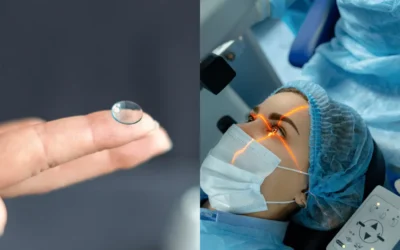Amblyopia, also known as lazy eye, is a common vision problem that affects both children and adults. It occurs when the brain favors one eye over the other, leading to reduced vision in the weaker eye. If left untreated, amblyopia can lead to vision loss and even blindness.
If you or a loved one has been diagnosed with amblyopia, keep reading to learn more about this condition and how vision therapy can help.
What is amblyopia?
Amblyopia is when one eye sees better than the other because the brain has learned to ignore the weaker eye. The weaker—or lazy—eye may wander inward or outward. Amblyopia typically develops in childhood, often before the age of eight.
Amblyopia can be caused by a variety of factors. The most common cause is when one eye is weaker than the other or has a different prescription. The brain may suppress the vision from the weaker eye and rely only on the stronger eye. Other causes of amblyopia may include eye misalignment (strabismus), cataracts, or other eye diseases that blur the vision.
How can vision therapy help amblyopia?
Vision therapy involves a series of eye exercises and activities designed to help the brain and eyes work together more effectively. It’s like a workout routine for your eyes! The exercises are tailored to the patient’s specific needs and encourage the brain to pay attention to the weaker eye. By engaging in these exercises regularly, the brain starts to develop better communication with the weaker eye, ultimately improving its visual acuity and overall functioning.
Some of the benefits of vision therapy for amblyopia patients include:
- Improved depth perception – Vision therapy helps patients judge distance and space better, so they can see the world more clearly.
- Better visual acuity – Vision therapy is designed to strengthen the visual system, leading to improved acuity in the weaker eye.
- Binocular function – With vision therapy, the eyes coordinate better, so they can work together more efficiently.
- Boost in confidence – When visual abilities improve, patients feel more confident in performing daily tasks like reading or socializing.
- Avoiding surgery – Vision therapy is a non-surgical option, which means patients can avoid surgery and its associated risks.
Vision therapy can be an effective treatment option for amblyopia. However, it’s important to consult with your eye doctor to see if vision therapy is right for you or your loved one’s specific case. They can create a personalized treatment plan that focuses on your or your child’s unique visual needs and goals. If you’re interested in learning more about vision therapy and how it can help, don’t hesitate to reach out and schedule an appointment with us today!





